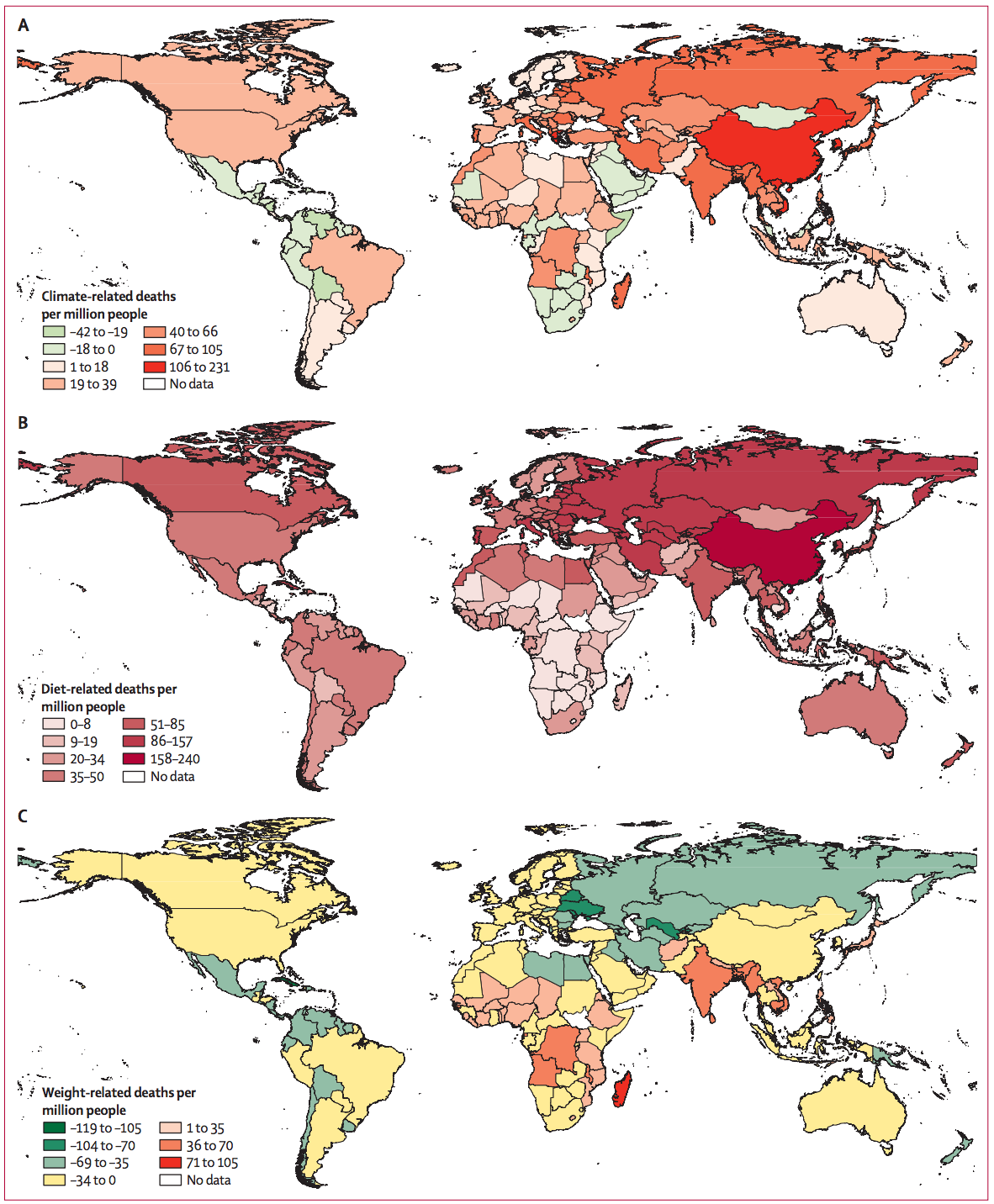The degrees rise to the detriment of the health of the populations. By 2050, global warming risks causing a surplus of 500,000 deaths.

The planet is overheating … and the health of its inhabitants is threatened. The Paris agreement, concluded on December 12 at COP21, will be submitted to the Council of Ministers on March 9 for ratification. Its entry into force, it is not planned before 2020. But time is running out on the five continents: global warming will cause half a million additional deaths by 2050, according to a model published in The Lancet.
Food insecurity
155 countries are involved in this simulation. The situation is not going to improve in any of them. As temperatures rise, crop productivity will drop. As a result, food will be less and less available. Each individual will thus see their daily calorie intake decrease by an average of 99 kilocalories. Fruits and vegetables bear the heaviest burden, with a drop of 4% against 0.7% for red meat.
This less rich diet will promote the emergence of cardiovascular diseases but also cancer. And the expected decline in obesity – around 260,000 fewer cases – will not change that much. As many cases of severe undernutrition are expected to emerge.
As often, low and middle income countries are the most exposed to this food insecurity. In the West Pacific region and Southeast Asia, 264,000 deaths and 1,640,000 additional deaths are expected by 2050. But Greece and Italy will not be spared either. The situation is all the more damaging given that in the absence of climate change, 1.9 million deaths could have been avoided over the same period.

Deaths expected in the world by 2050 linked to climate (A), food (B)
and weight (C).
Source : The Lancet
Very vulnerable women
And it is not only the food balance that is threatened by the upheaval in the climate. Vector-borne diseases, transmitted by food or water, allergies are all disorders that will emerge in the years to come. Some populations are particularly exposed to it, warn American researchers in the Annals of Global Health. This is particularly the case for children, who are very vulnerable to malnutrition, diarrhea and malaria.
Women must also be followed carefully. In many low-income countries, they are responsible for providing water, food and energy for the household. They are also the most likely to die in the event of a natural disaster or vector-borne infection, note the authors. Not to mention the countless assets exposed to heat, precipitation, polluting or infectious agents… In these conditions, it is difficult to imagine a positive future. The objectives set by COP21 – limiting global warming to less than 2 ° C – may not be sufficient.
.















